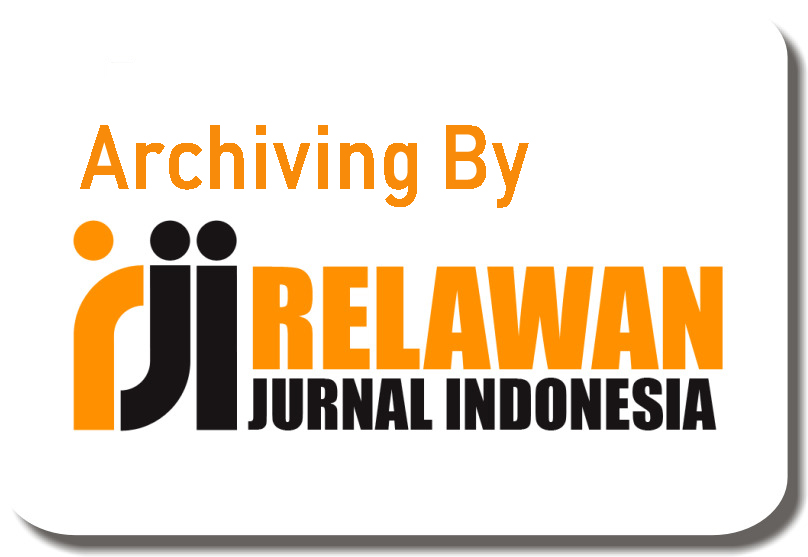Increasing Student Motivation in Learning English Through Digital Ice-Breaking Activities
Abstract
In this digital era, students often lack motivation in conventional English learning. Although ice-breaking is found to be helpful, conventional methods can feel monotonous for students who are familiar with digital technology, and the impact of digital ice-breaking has not been widely explored. This study aims to determine the effectiveness of digital ice-breaking (using platforms such as Bamboozle, Kahoot! and Quizizz) on the learning motivation of eighth-grade students at SMP Negeri 1 Diwek. A pre-experimental design with one pre-test/post-test group was used on 31 eighth-grade students in class C. Motivation was measured using a questionnaire before (pre-test) and after (post-test) the digital ice-breaking treatment. The results showed a statistically significant difference (p = 0.009) between the pre-test motivation scores (mean = 30.29) and post-test scores (mean = 33.36). The Paired Samples T-test (t = -2.790) and moderate effect size (Cohen's d = -0.501) confirmed the positive impact of the treatment. Digital ice-breaking proved to be effective in increasing students' motivation in learning English.
Keywords
Full Text:
PDFReferences
Adi, M. S., Susanti, R. A., & Jannah, Q. (2021). The Effectiveness of Ice Breaking to Increase Students’ Motivation in Learning English. International Journal of English Education and Linguistics (IJoEEL), 3(1), 31–38. https://doi.org/10.33650/ijoeel.v3i1.2256
Arifani, P. & Safitri, L. (2023). The Effect Of Implementing Ice Breaking Towards Students Motivation In Learning English At Second Grade In SMK Cendana Padang Panjang. PESHUM : Jurnal Pendidikan, Sosial Dan Humaniora, 2(4), 723–727. https://doi.org/10.56799/peshum.v2i4.1815
Artati, N. L. R. (2021). Effect of Kahoot As an Ice Breaker on EFL Students’ Motivation. The Art of Teaching English as a Foreign Language, 2(2), 89–97. https://doi.org/10.36663/tatefl.v2i2.121
Cohen, J. (1988). Statistical Power Analysis for the Behavioral Sciences (2nd ed.). Lawrence Erlbaum Associates, Publishers.
Field, A. (2018). Discovering Statistics Using IBM SPSS Statistics (5th ed.). SAGE.
Hasumi, T., & Chiu, M. S. (2024). Technology-enhanced language learning in English language education: Performance analysis, core publications, and emerging trends. Cogent Education, 11(1). https://doi.org/10.1080/2331186X.2024.2346044
Hayat, U. A., Riyadi, S., & Sulistio, P. H. (2024). Virtual Ice Breaker to Improve Students’ Speaking Skills Through Online Learning. Language, Education, and Development (LEAD) Journal. Vol 3 No. 2 (2024) 58 – 70. http://jos.unsoed.ac.id/index.php/lead/index
Okhunov, M. (2025). The Silent Period In Teenage Efl Learners: Understanding And Supporting Silent Learners. International Journal of Artificial Intelligence, 1(2), 1480–1482.
Pane, M. A. R. (2024). The Correlation Between Ice Breaking Strategy And Students’ Motivation In Learning English At Tenth Grade MA Hubbulwathan Duri. Jolly Journal of English Education, 2(1), 61–71. https://doi.org/10.63435/jjee.v2i1.80
Pratama, H., Maduretno, T. W., & Yusro, A. C. (2021). Online Learning Solution: Ice Breaking Application to Increase Student Motivation. Journal of Educational Science and Technology (EST), 7(1), 117–125. https://doi.org/10.26858/est.v7i1.19289
Purmama, N. A., Rahayu, N. S., & Yugafiati, R. (2019). Students’ Motivation in Learning English. PROJECT (Professional Journal of English Education), 2(No. 4, July), 539–544. http://dx.doi.org/10.22460/project.v2i4.p539-544
Sari, U. A., Fauziyah, N., Ghozi, A., Azizah, I. N., & Al-Fidyah, U. F. (2021). Improving the Students’ Learning Concentration Through Ice Breaking. Proceedings of the International Conference on Engineering, Technology and Social Science (ICONETOS 2020), 529(Iconetos 2020), 614–619. https://doi.org/10.2991/assehr.k.210421.089
Sasan, J. M. V, Tugbong, G. M., & Alistre, K. L. C. (2023). An Exploration Of Icebreakers And Their Impact On Student Engagement In The Classroom. International Journal of Social Service and Research, 3(11), 2921–2930. https://doi.org/10.46799/ijssr.v3i11.566
Sembiring, F., & Sitepu, C. N. B. (2024). Integration of Information Technology Systems in English Learning Management. Formosa Journal of Applied Sciences, 3(11), 4617–4626. https://doi.org/10.55927/fjas.v3i11.12285
Sugiyono. (2020). Metodologi Penelitian Kuantitatif, Kualitatif dan R & D.
Wei, L. (2023). Artificial intelligence in language instruction: impact on English learning achievement, L2 motivation, and self-regulated learning. Frontiers in Psychology, 14(November), 1–14. https://doi.org/10.3389/fpsyg.2023.1261955
Zulfadli, N. E., Farizawati, & Jamaliah. (2024). the Efficacy of Ice-Breaking Activities in Enhancing Students’ Motivation for English Language Acquisition. English Education and Applied Linguistics Journal (EEAL Journal), 7(2), 79–84. https://doi.org/10.31980/eeal.v7i2.1532
DOI: https://doi.org/10.31004/jele.v%25vi%25i.1632
Refbacks
- There are currently no refbacks.
Copyright (c) 2025 Moch Irfani, Sayid Ma’rifatulloh

This work is licensed under a Creative Commons Attribution-ShareAlike 4.0 International License.



